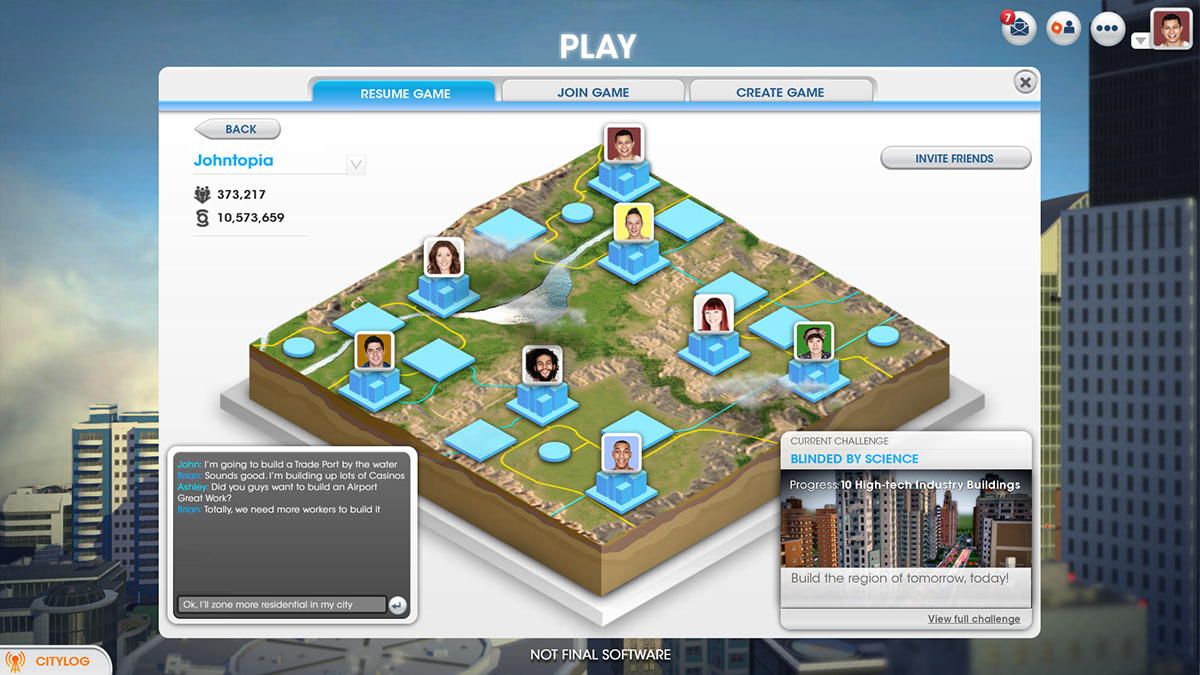
In 2012, I completed the newest SimCity at EA's Maxis Studio.
I worked as part of the multiplayer gameplay team, the critical element that set this SimCity apart from the others in the franchise. Players were now part of a Region of cities, their individual experience having a meaningful impact on others around them like a real city.

This is the entire Maxis studio. I'm in the exact center with the black jacket and sunglasses, right above the Studio SVP, Lucy Bradshaw.

I was hired to work on multiplayer gameplay interactions, such as the region missions which would appear in those bubbles you can see on the left of the screen.

One such mission was the International Airport. It may seem simple, but because regional Great Works like the Airport were something more than one networked player contributed to, getting everything to sync up and reflect what was happening was pretty difficult.

In fact, throughout the development of the multiplayer experience in SimCity it was difficult to communicate to the player accurately what data existed in the region. It was then early on that I transitioned to the greater programming role of surfacing data in the game's UI.

I loved my job! It was on me to show the player the magic that made this SimCity so great. You were part of a world where the flow of resources mattered, whether you liked them or not.

When you made an impact locally, it would spill out to the cities around you. This lead to interesting strategies and coping with limitations. One city might be the perfect residential city, while the neighboring one was a smelly, but necissary, industrial city, sandwiched between a crime-ridden city.

The link between the cities was an important tactic to creating a successful region.

You can't just delete your problems like in previous franchise iterations, and it made the experience more real. Even the real-life mayors we had play the game agreed!

It felt like a greater achievement when you and a neighboring mayor would achieve something together, combining both cities' resources. It made it a truly Great Work.

Like any resource in the game, culture was also an element. Plop an Eifle Tower and a touch of France would spread through your city.

Mayors could visit and communicate with their neighbors, marveling at their attractions and sending their virtual citizens. I spent a lot of time developing the game's chat system, which you can see in the bottom of left of the window.

In this early screenshot of the game, we added 3D arrows to show the directional flow of resources through a Region.

Once a player understood how proximity to other cities played a role, they would intellegently chose Regions around objectives. Some areas were better suited for wind energy, others for water, and some had seemingly no resources, and they made pretty good industrial cities.

A great wind-powered city


Make your own virtual Silicon Valley - having an educated workforce lead to less crime (but do they know how to conserve water?!)



